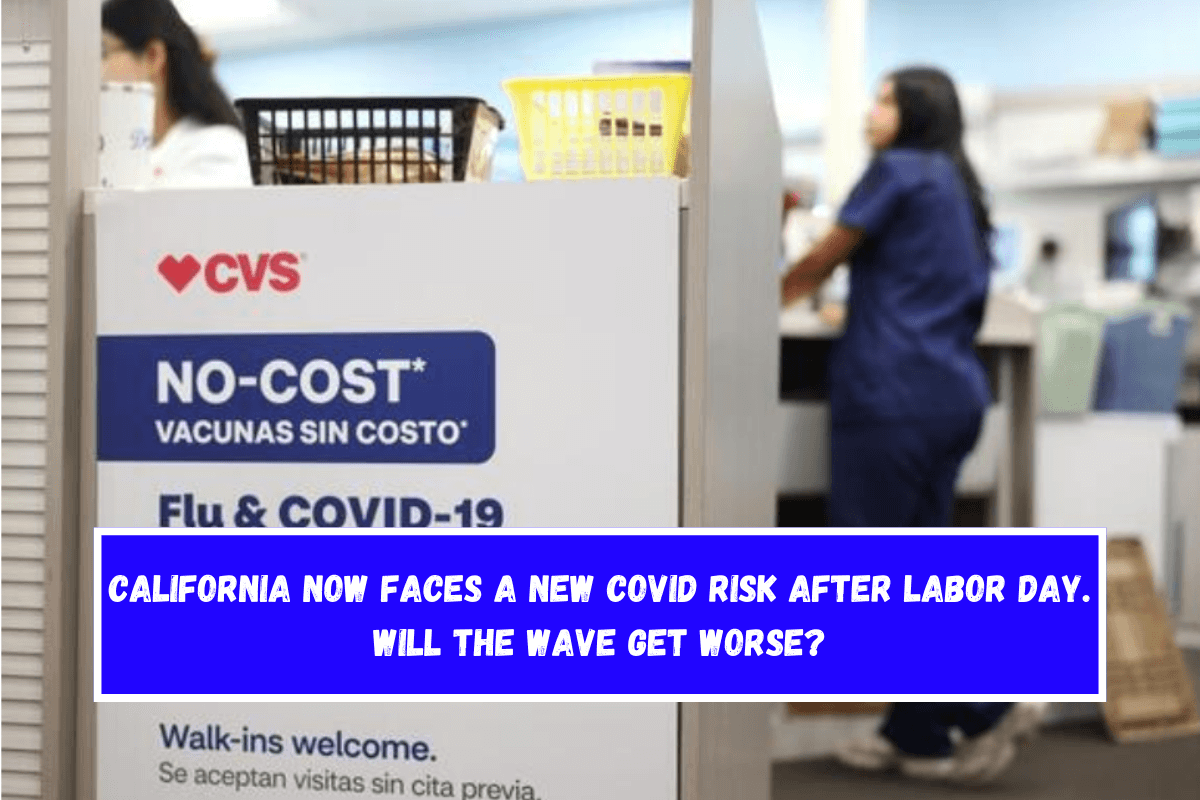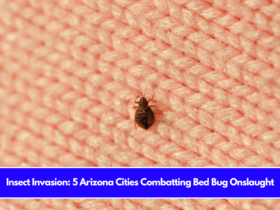Even though COVID levels have stayed stubbornly high in California, some doctors are warning that transmission could speed up again after the busy Labor Day holiday weekend. This could make the summer wave last longer than some experts thought it would.
Doctors will be keeping a close eye on the data to see if there are any signs of a post-holiday bump, which could happen for a number of reasons. First, a possibly record-breaking number of Americans were expected to drive or fly this year, and since COVID transmission is high across most of the country, there is a real chance of being exposed.
Second, the coronavirus has kept changing in ways that make it easier for it to move from person to person.
“People are not just back to where they were before the pandemic; I think they’re even more traveled than before the pandemic,” said Dr. Elizabeth Hudson, who is in charge of infectious diseases for Kaiser Permanente Southern California.
“So that does mean that there’s real risks of getting in contact with someone else who has COVID,” she added. And since many kids in California have already gone back to school, “this is, unfortunately, a prime weekend to potentially come down with something.”
The CDC said Friday that 47 states have “high” or “very high” amounts of coronavirus in their wastewater. California is one of those states. In the District of Columbia it’s also true.
The Transportation Security Administration had predicted that this past holiday weekend would be the busiest time to travel for Labor Day on record. Over 17 million people were expected to be screened at airports over the seven days that ended on Wednesday.
A specialist in infectious diseases at UC San Francisco, Dr. Peter Chin-Hong, said, “A lot of the people I know get COVID after coming back from a trip.” “Be prepared for the possibility that those sniffles or symptoms after coming back will be COVID.”
That people who are already at a higher risk, like those 65 and older and people with weak immune systems, should get tested even more. If they test positive, they should get early antiviral treatment like Paxlovid right away, especially if they haven’t had a shot in a year.
People with COVID who are admitted at UCSF are usually in their 70s or 80s and haven’t had a vaccine in the last year, Chin-Hong said.
This summer’s COVID wave has been much longer in California and across the country than last year’s. Since June, “high” or “very high” levels of coronavirus have been found in wastewater in California for 12 weeks. More are due to come. California had “high” amounts of coronavirus in sewage for eight weeks last summer, but they never got to “very high” levels.
A big reason for this rise in infections is the spread of subvariants that are becoming more and more contagious. These subvariants have unofficial names that refer to the mutations that give them an evolutionary edge over earlier forms.
In May, the FLiRT strains showed up. Since then, FLuQE (pronounced “flake”) and most recently, deFLuQE (pronounced “de-fluke”) have taken their place.
KP.3.1.1 is now the most common type of coronavirus. The CDC says that subvariant with the deFLuQE mutations made up 42.2% of coronavirus samples across the country for the two weeks ending Saturday. That’s up from 19.8% a month ago.
This summer, there have been a few more COVID hospitalizations and deaths, but they are still much lower than in previous waves. This is because people are still immune to severe diseases from earlier infections and immunizations.
There were 881 COVID deaths across the country in the week ending August 10. That’s more than twice as many as in the first week of summer.
As of the most current report, the number of COVID deaths in L.A. County rose to 2.9 per day during the week ending August 6. Before that, since early July, L.A. County had been reporting about one to two COVID deaths every day.
There are signs that the coronavirus may have peaked in some parts of the country. But some doctors say we’ve been lied to before.
California is one of nine states where the CDC thinks COVID-19 is “declining” or “likely declining,” according to figures released Friday.
It will be some time before we know if that trend will continue. There was a week earlier this summer when COVID in California was labeled as “stable or uncertain,” but then transmission got worse again.
“In the past, you know, four to eight weeks, we have done this thing where we sort of crested, and then a couple weeks later, the numbers started to go up again,” he said. “Okay, this is a really crazy time.” “We’re not sure which way things are going to go.”
Hudson said that things like “the confluence of Labor Day and the kids being back in school” could work together to raise transmission rates. And the sticky summer heat could make things even worse by keeping people inside in places where air flow is poor, which is perfect for COVID to spread.
“We won’t know if we’ve passed this summer peak” until more weeks of data come in, said the Los Angeles County Department of Public Health.
Coronavirus levels in sewage in L.A. County were 86% of their highest point last winter during the 10 days that finished on August 17. This was about the same as earlier in the month. The week ending August 25 saw an average of 410 coronavirus cases per day. This was less than the previous week and a lot less than the summer high of 484 cases.
There is no doubt that the number of coronavirus cases is too low. This is because tests done at home and the fact that fewer people are testing ever play a role. However, the trends can still help us figure out where the wave is going.
In L.A. County, the percentage of trips to the emergency room that are caused by the coronavirus has stayed about the same for the past three weeks, ranging from 3.9% to 4.3%. This number is the biggest so far this season. The high point was 5.1% last summer.
The rate at which coronavirus tests are positive across the state keeps going up. 13.7% of coronavirus tests in California were positive for the week ending August 26. This is up from 11.7% the previous month. The most recent number is higher than the highest points from last winter and last summer.
Chin-Hong said that the COVID wave began earlier in California and the West, and he thinks that the state has hit the peak. Many of the people that COVID would have infected have now been sick. Of course, there will be more cases around Labor Day, but the number probably won’t keep going up.
As of Friday, there were eight patients brought to UCSF hospitals who tested positive for the coronavirus. This is about the same number of patients as in late spring. It was about 30 people at its busiest point in the summer, three or four weeks ago, Chin-Hong said.
Doctors tell people who are sick to stay home and away from other people to stop the spread of COVID. You should also test if you do feel sick.
Even if your first rapid test comes back clear, you could still have COVID-19. Doctors say that tests should be done once a day or every other day until five days after the first sign of illness.
People who are still moving may want to wear masks inside, like on planes and in airports, to lower their risk of getting sick.
For the 2024–25 season, the CDC says that everyone aged 6 months and up should get a shot, preferably in September or October.
COVID:The U.S. Food and Drug Administration gave the go-ahead for 19 vaccines from Moderna and Pfizer on August 22. Doses were generally available the following week. The FDA approved Novavax’s improved seasonal vaccine formula on Friday. This vaccine is made with older technology that is based on proteins.
There are some people who might like Novavax better than the Moderna and Pfizer mRNA vaccines. Hudson says that side effects like a swollen arm and a low-grade fever are a little more likely to happen with mRNA vaccines than with Novavax or other protein-based vaccines.
But Novavax’s vaccine for the 2024–25 season was made to protect against an older subvariant called JN.1. Moderna and Pfizer’s vaccines, on the other hand, were made to protect against KP.2, a more recent subvariant that is more closely related to KP.3.1.1.
“But you know, it’s still a very good option,” Hudson said of this season’s Novavax formula.
“I feel very confident that it will give people very good protection,” Chin-Hong said of Novavax. “There are only a few differences between JN.1 and KP.2.”
The side effects that can happen after getting the Moderna or Pfizer COVID shots usually don’t last more than a day and aren’t too bad—much less bad than getting a COVID illness, according to Hudson. Hudson said that after getting these vaccines, only about 25% of people tend to have more serious side effects like a sore arm and a low-grade fever.
Some doctors say that you should get your COVID shot when you have time to rest afterward.
A lot of shops already offer COVID shots, including CVS, Walgreens, Rite Aid, Vons, Albertsons, Pavilions, and Safeway. Kaiser Permanente and Sutter Health are about to start giving the shots in the middle of September.
The L.A. County Department of Public Health will finally offer free doses at its public health clinics and multiservice vaccination sites to people who don’t have insurance or don’t have enough insurance. It said, “We are waiting for our supply from the manufacturers but hope to have these at the sites in the next couple of weeks,” which means later in September.
Officials also said that the California Department of Public Health will get more money to give people who don’t have health insurance or enough insurance free doses of the COVID vaccine. In October, the state should make those shots available for order. Officials in L.A. County said it’s likely that the shots will be given to doctors and hospitals that have already given out free COVID shots.
Through the government Bridge Access Program, adults without health insurance could get free vaccines last year. People could get vaccinated at federally qualified health centers, as well as at CVS and Walgreens. Late in August, the Bridge Access Program came to an end.















Leave a Reply